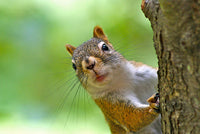Subtotal
$0.00
or
Putting aside the politics surrounding climate change, dogs have a very interesting story to tell us and weather just happens to have had a very important role in their narrative of how they came to be.
Dogs have long been known to be the natural inhabitants of North America. But what some may not know is that over 40 million years ago North American was quite warm, resembling in many ways a jungle like environment one would see in South America or Africa. Over time, as the climate changed and got significantly cooler, North American got much drier and vast amounts of land turned into open grass fields. This process, evidenced by fossils found, points to these events actually shaping the evolution of the dog.
In the end, “alterations in the global climate and their effects on vegetation lands and habitats are critical indicators of how ecological and evolutionary outcomes may appear in the future.”
Our potential as a species is largely undetermined. Every day we learn more about our past and its subsequent effects on what may lie ahead. As E.B. White put it, I would feel more optimistic about a bright future for man if he spent less time proving that he can outwit Nature and more time tasting her sweetness and respecting her seniority.

How to Keep Racoons, Skunks, and Squirrels Away - Without Traps or Poison

Why Dogs Shouldn't Eat Turkey: What Every Pet Owner Should Know

You love your dog—but the constant barking every time someone walks past the fence? Not so much.

Handheld Bark Control vs. Collars | Best Dog Barking Deterrent Devices

10 Fun Pet Costume Ideas (and How to Keep Pets Comfortable)